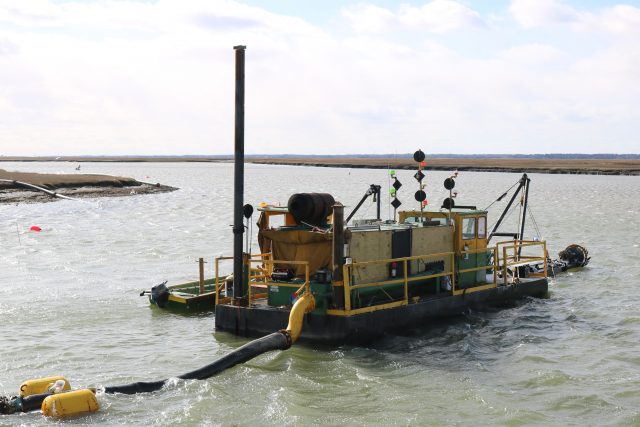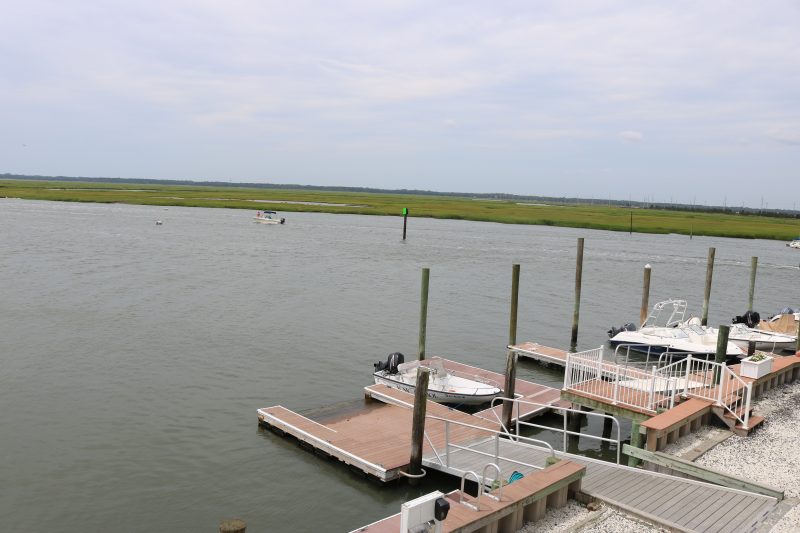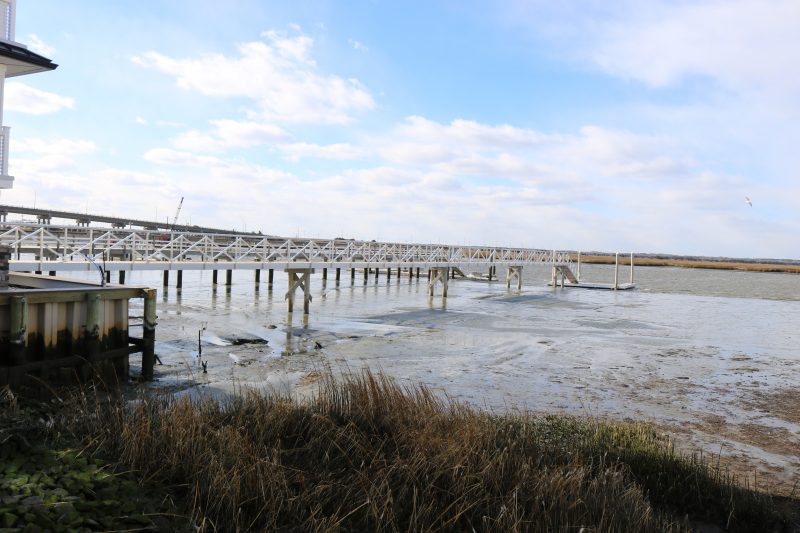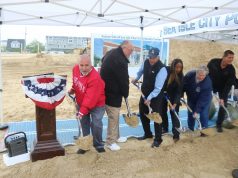
By DONALD WITTKOWSKI
Lurking beneath the surface of some of Sea Isle City’s waterways is something that has probably been there for a millennium.
The gooey, mud-like sediment building up in some of the most popular lagoons and channels is thick enough to occasionally trap an unsuspecting boater at low tide.
However, Sea Isle has started a $945,000 dredging project to deepen the waterways over the next two months to have them ready in plenty of time before the bustling summer boating and fishing season.
Sea Isle’s lagoons are a major part of the town’s identity as a boating, fishing and resort community. Visionary real estate developer Charles K. Landis was inspired by Venice, Italy, when he founded Sea Isle as a seashore resort in 1882 and began creating lagoons along the bays so he could sell more waterview property after the oceanfront sites were gobbled up.
“Sea Isle City is a boating and fishing community. All you have to do is look at our bays during the summer months to see how popular boating is. You’ll see a huge number of boats here,” city spokeswoman Katherine Custer said.

The dredging project is described as maintenance work to keep sediment from completely choking the lagoons and channels. The city previously dredged parts of the lagoon system in 1981, 1982, 1989, 1999 and then in 2012, according to the U.S. Army Corps of Engineers, the federal agency that issued the permit for the current project.
Dredging is expected to be finished by mid-March, Custer said. The dredging contractor has started the work in the channel next to the Yacht Club of Sea Isle City at the bay end of Venicean Road.
Jim Collins, the yacht club’s general manager, explained that the channel should be 8 feet deep, but is much shallower, perhaps only 2 feet in some spots at low tide.
Collins has seen boaters become stranded from time to time in the muddy sediment at low tide.
“A lot of people would swim to shore and leave their boats because they knew they would be out there for a while,” he said in an interview Friday.
Now that the channel will be deepened, the yacht club plans to build seven new boat slips, giving it a total of 38.
“It’s great that the city has given us and homeowners the opportunity to dredge our slips with this project,” Collins said.

As part of the project, the city will work with the yacht club as well as bayfront homeowners on Venicean Road and 38th Street and Sounds Avenue to get their private boat slips dredged.
The yacht club and homeowners will pay for dredging their boat slips, but will be able to save money by piggybacking on the city’s dredging permits. The process would relieve them of some of the costs and headaches of doing the dredging work on their own, including finding a disposal site for the sediment.
Dredging equipment is parked in the channel next to the yacht club. Two types of dredging are being done for the project – mechanical and hydraulic.
The mechanical form of dredging uses the claw of a large excavator to literally scoop out the sediment. Hydraulic dredging involves pumping the sediment out of the water to a disposal site.
Grateful that the project is underway, Collins said the work appears to be going smoothly in the early stages.
“They’re moving along pretty good. We’re happy with the progress so far,” he said.

After the channel next to the yacht club is deepened, the dredging project will clear out sediment in spots on the Intracoastal Waterway side of Venicean Road, Custer said.
Later, the dredging work will focus on the canal between 43rd and 44th streets. The city will also dredge the lagoon that serves the Sea Isle municipal marina on 42nd Place, Custer said.
In summer, the marina area comes alive with private boats, large commercial fishing vessels and charter boats.
Sea Isle will also dredge the bay area next to 38th Street and Sounds Avenue. At times during low tide, that area looks more like a mudflat than an active waterway because of the buildup of sediment.







